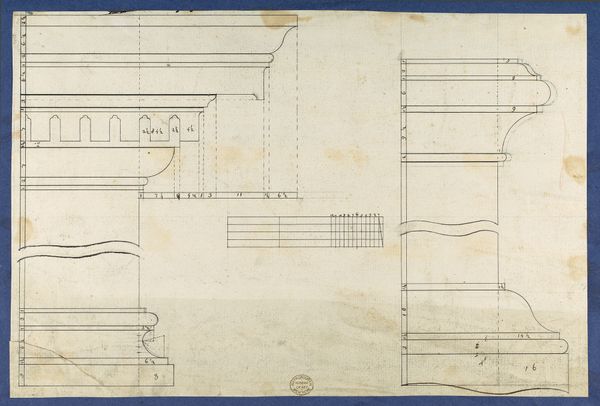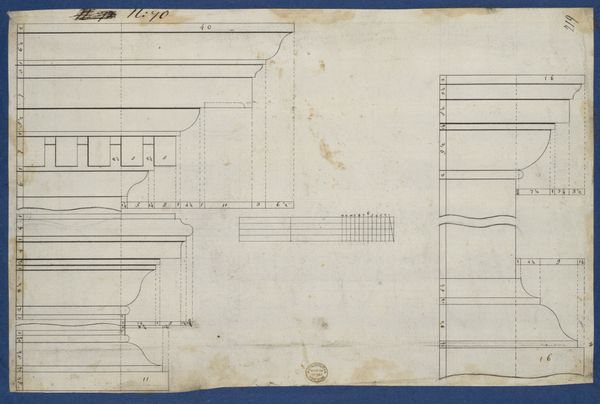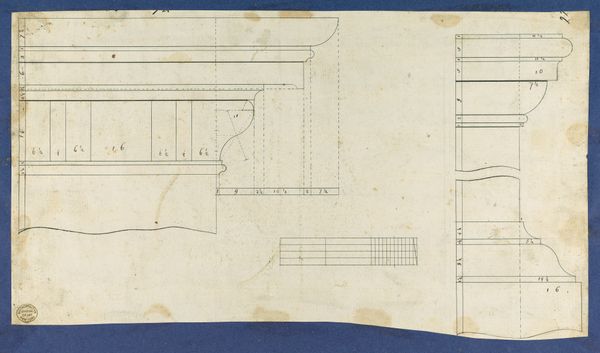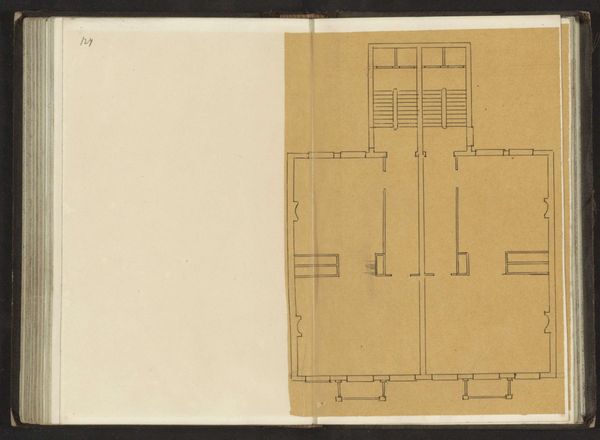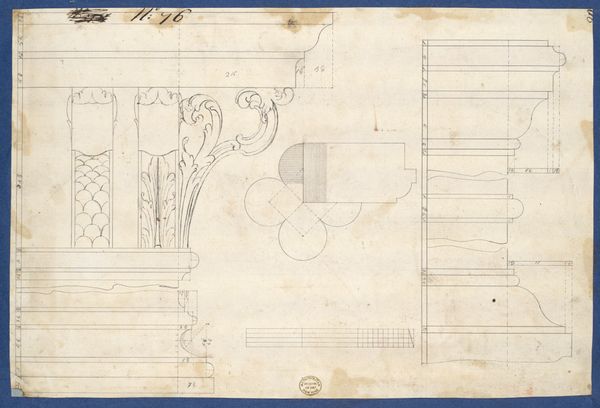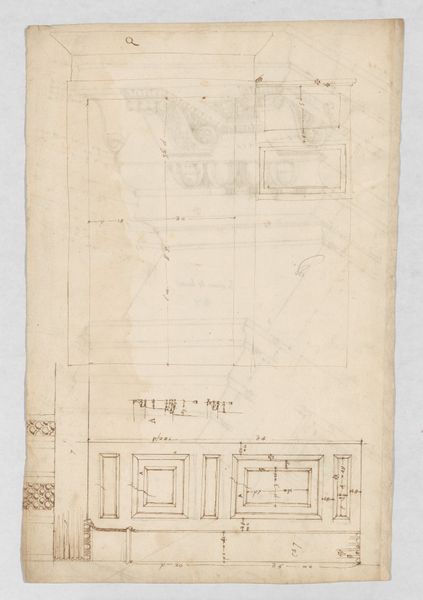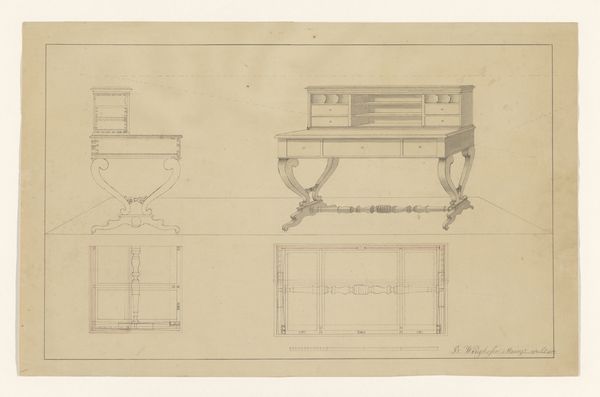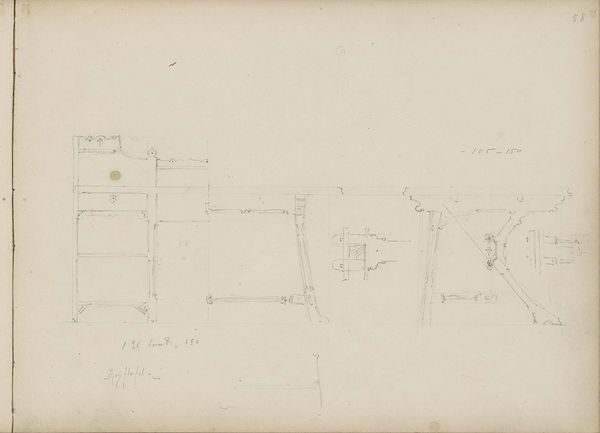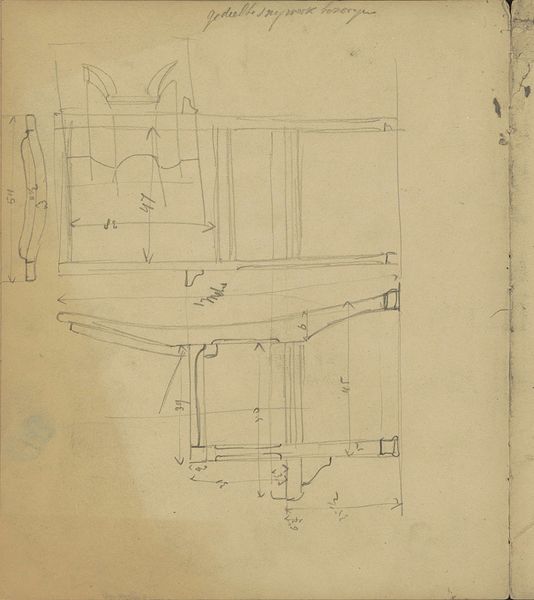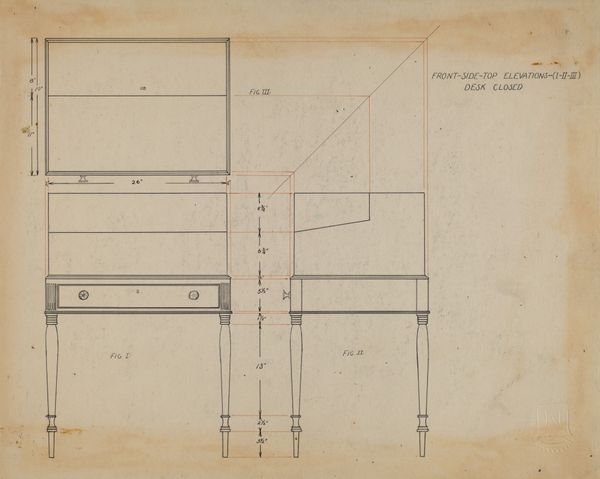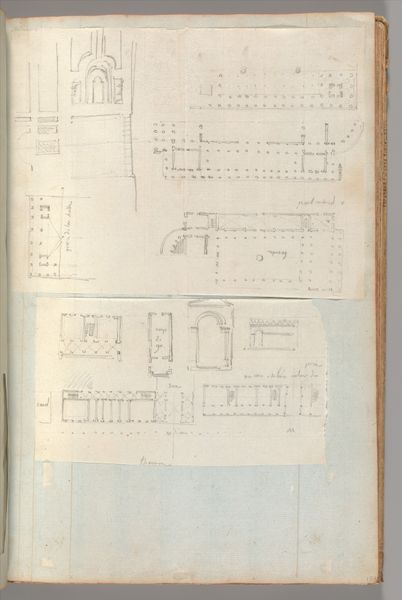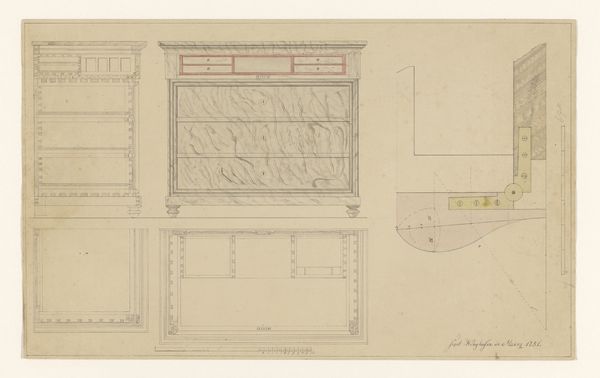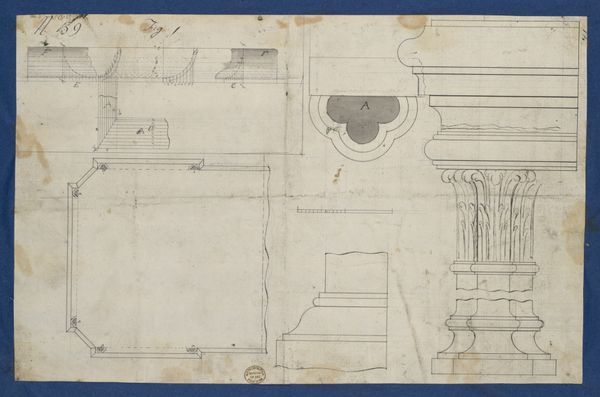
Moldings for Bookcases, from Chippendale Drawings, Vol. II 1753
0:00
0:00
drawing, print
#
drawing
#
neoclacissism
# print
#
furniture
#
geometric
#
line
#
academic-art
Dimensions: sheet: 7 3/4 x 11 7/8 in. (19.7 x 30.1 cm)
Copyright: Public Domain
Editor: We are looking at "Moldings for Bookcases, from Chippendale Drawings, Vol. II" created in 1753 by Thomas Chippendale, currently at the Metropolitan Museum of Art. It appears to be a technical drawing or print showing precise measurements and details for furniture construction. What immediately strikes me is the contrast between its utilitarian function and its clear aesthetic appeal. How do you interpret this work, considering it’s more of a design blueprint than a finished art piece? Curator: Indeed, your observation regarding the dichotomy between utility and aesthetic appeal is astute. As a formalist, I find compelling the composition itself. Consider the arrangement of lines, the geometric interplay, and the repetition of forms. Note how Chippendale uses line weights to create a sense of depth and hierarchy. The numerical annotations, though functional, contribute to the overall texture and visual rhythm. Do you perceive how the seemingly rigid structure also hints at the final ornate product? Editor: I do see that. It's fascinating how even in a purely functional drawing, there is this inherent sense of artistry. The different shapes combined to create depth in the design really give dimension to what would otherwise be lines. It gives a glimpse into what he envisioned as the completed object. Do you think the use of drawing as a medium adds to its significance? Curator: Absolutely. The medium of drawing, especially a meticulous drawing like this, emphasizes the process of creation, revealing the artist’s hand and intention. The academic precision of the lines underscores a commitment to classical ideals, aligning with the Neoclassical movement. What implications might we infer by analysing only these forms and their intrinsic relationships? Editor: Thinking about it, this blueprint almost deconstructs the idea of furniture. It forces us to consider furniture as arrangements of forms, proportions, and measurements, stripping away the cultural and functional associations we typically have. Curator: Precisely. It serves as a valuable lesson in the power of form, revealing how even the most utilitarian objects are governed by aesthetic principles. Thank you for pointing it out. Editor: This conversation has opened my eyes to appreciate the artistry even in technical drawings. Thank you for helping me explore this artwork.
Comments
No comments
Be the first to comment and join the conversation on the ultimate creative platform.
